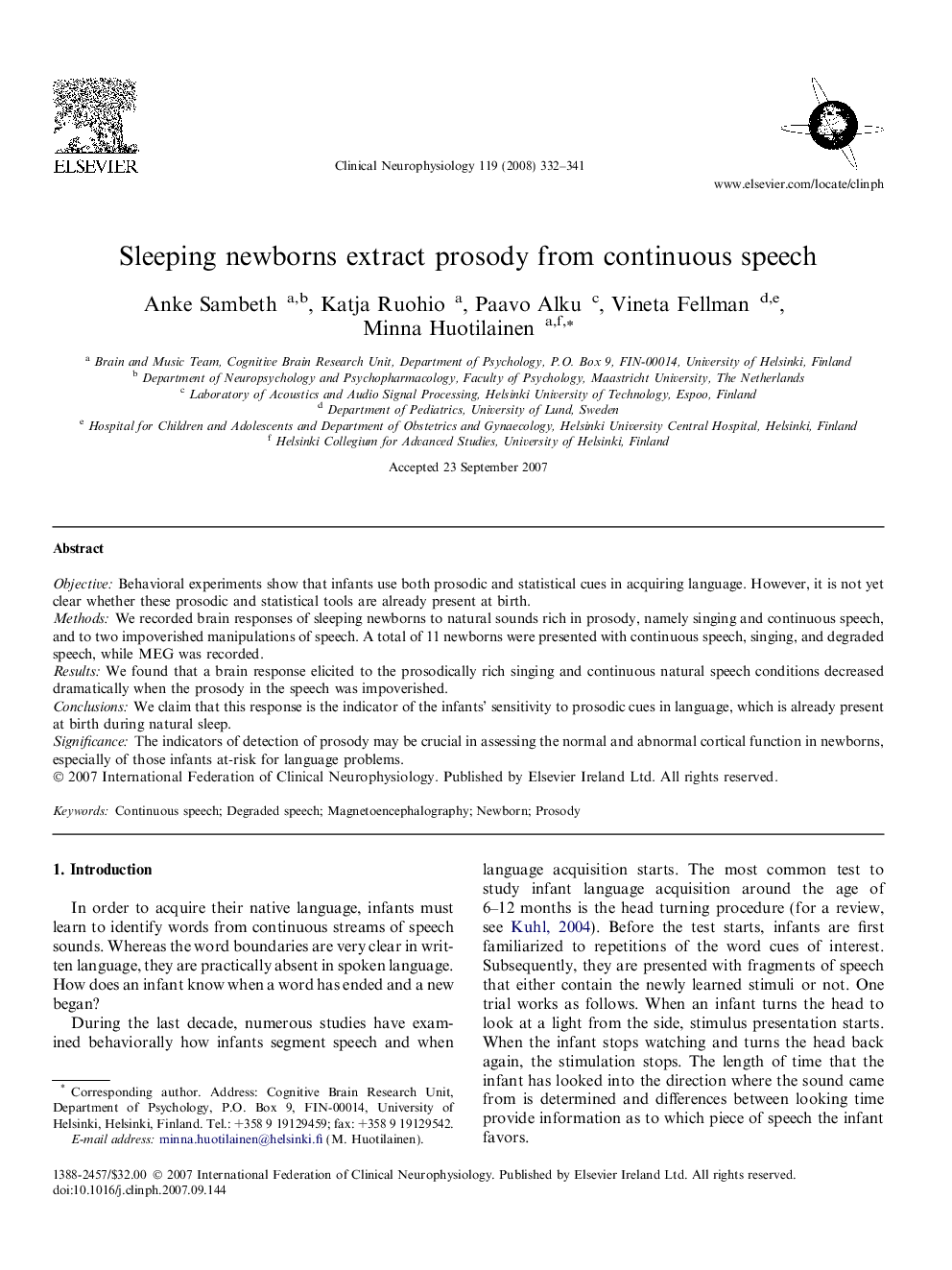| Article ID | Journal | Published Year | Pages | File Type |
|---|---|---|---|---|
| 3047873 | Clinical Neurophysiology | 2008 | 10 Pages |
ObjectiveBehavioral experiments show that infants use both prosodic and statistical cues in acquiring language. However, it is not yet clear whether these prosodic and statistical tools are already present at birth.MethodsWe recorded brain responses of sleeping newborns to natural sounds rich in prosody, namely singing and continuous speech, and to two impoverished manipulations of speech. A total of 11 newborns were presented with continuous speech, singing, and degraded speech, while MEG was recorded.ResultsWe found that a brain response elicited to the prosodically rich singing and continuous natural speech conditions decreased dramatically when the prosody in the speech was impoverished.ConclusionsWe claim that this response is the indicator of the infants’ sensitivity to prosodic cues in language, which is already present at birth during natural sleep.SignificanceThe indicators of detection of prosody may be crucial in assessing the normal and abnormal cortical function in newborns, especially of those infants at-risk for language problems.
